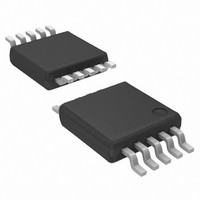ATA8404-6DQY Atmel, ATA8404-6DQY Datasheet - Page 5

ATA8404-6DQY
Manufacturer Part Number
ATA8404-6DQY
Description
IC TRANSMITTR ASK/FSK UHF 10TSSO
Manufacturer
Atmel
Datasheet
1.ATA8405-6DQY.pdf
(20 pages)
Specifications of ATA8404-6DQY
Frequency
313MHz ~ 317MHz
Applications
Home Automation, Remote Sensing, RKE
Modulation Or Protocol
ASK, FSK
Data Rate - Maximum
40 kBaud
Power - Output
4dBm ~ 8dBm
Current - Transmitting
8.4mA
Data Interface
PCB, Surface Mount
Antenna Connector
PCB, Surface Mount
Voltage - Supply
2 V ~ 3.6 V
Operating Temperature
-55°C ~ 85°C
Package / Case
10-TSSOP
Operating Temperature (max)
85C
Operating Temperature Classification
Industrial
Operating Supply Voltage (typ)
2.5/3.3V
Operating Supply Voltage (max)
3.6V
Lead Free Status / RoHS Status
Lead free / RoHS Compliant
Features
-
Memory Size
-
Lead Free Status / Rohs Status
Compliant
4. Functional Description
9136C–INDCO–10/09
The power amplifier is an open-collector output delivering a current pulse which is nearly inde-
pendent from the load impedance and can therefore be controlled via the connected load
impedance.
This output configuration enables a simple matching to any kind of antenna or to 50 . A high
power efficiency for the power amplifier results if an optimized load impedance of
Z
433.92 MHz is used at the 3-V supply voltage.
If ASK = Low, FSK = Low, and ENABLE = open or Low, the circuit is in power-down mode
consuming only a very small amount of current so that a lithium cell used as power supply can
work for many years.
If the ENABLE pin is left open, ENABLE is the logical OR operation of the ASK and FSK input
pins. This means, the IC can be switched on by either the FSK of the ASK input.
If the ENABLE pin is Low and ASK or FSK are High, the IC is in idle mode where the PLL,
XTO, and power amplifier are off and the microcontroller ports controlling the ASK and FSK
inputs can be used to control other devices. This can help to save ports on the microcontroller
in systems where other devices with 3-wire interface are used.
With FSK = High, ASK = Low, and ENABLE = open or High, the PLL and the XTO are
switched on and the power amplifier is off. When the amplitude of the current through the crys-
tal has reached 35% to 80% of its final amplitude, the CLK driver is automatically activated.
The CLK output stays Low until the CLK driver has been activated. The driver is activated syn-
chronously with the CLK output frequency, hence, the first pulse on the CLK output is a
complete period. The PLL is then locked within < 250 µs after the CLK driver has been acti-
vated, and the transmitter is then ready for data transmission.
With ASK = High, the power amplifier is switched on. This is used to perform the ASK modula-
tion. During ASK modulation, the IC is enabled with the FSK or the ENABLE pin.
With FSK = Low the switch at pin XTO2 is closed, with FSK = High the switch is open. To
achieve a faster start-up of the crystal oscillator, the FSK pin should be High during start-up of
the XTO because the series resistance of the resonator seen from pin XTO1 is lower if the
switch is off.
The different modes of the ATA8404/ATA8405 are listed in
rent consumption values can be found in the table
Table 4-1.
ASK Pin
Low
Low
Low
High
High
Low/High
High
Load, opt
= 380 + j340 (ATA8404) at 315 MHz and Z
ATA8404/ATA8405 Modes
FSK Pin
Low
Low
High
Low
High
High
Low/High
ATA8404/ATA8405 [Preliminary]
ENABLE Pin
Low/open
High
High/open
High/open
High/open
Low
Low
“Electrical Characteristics” on page
Mode
Power-down mode, FSK switch High Z
Power-up, PA off, FSK switch Low Z
Power-up, PA off, FSK switch High Z
Power-up, PA on, FSK switch Low Z
Power-up, PA on, FSK switch High Z
Idle mode, FSK switch High Z
Idle mode, FSK switch High Z
Load, opt
Table
= 280 + j310 (ATA8405) at
4-1, the corresponding cur-
15.
5












